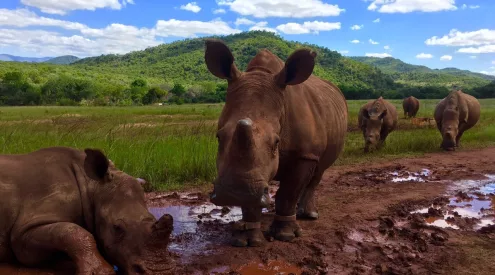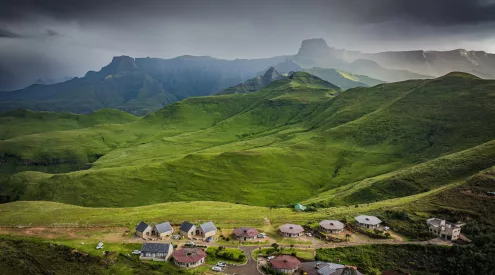The pangolin is a nocturnal, solitary and reptilian-looking mammal which is covered in a brown scaly armour. It is the world’s most trafficked mammal.
Of the eight pangolin species, four are found in Africa and four in Southeast Asia. The commercial pangolin trade was banned in 2016, yet poaching of these cute animals has increased at an alarming rate.
Pangolins can weigh between 4.5-14.5 kilogrammes and may grow to approximately 80 centimetres in length. They are extremely gentle in nature and feed only on insects. Pangolins are, however, fussy with their food and eat only 19 species of ants and termites. When threatened, a pangolin will roll itself up into a ball, using its scaly armour to protect itself.
Pangolins are found across South African savannahs, ranging from the Free State to KwaZulu-Natal and on into Sub-Saharan Africa. The four pangolins found in Africa are the black-bellied pangolin, white-bellied pangolin, giant ground pangolin and Temminck’s ground pangolin. In southeast Asia, India and China, pangolins are found in dry woodlands and tropical forests.
Pangolins give birth to one pangopup at a time. Depending on the species, pangolin gestation periods can last between 68-139 days. Their slow birth rate means that the species stands little chance of bouncing back from the ravaging effects of poaching, which persists at an alarming rate.
Pangolins are hunted and sold for many reasons. Their scales are used for leather products and their meat is part of the exotic food trade — pangolins are a delicacy in southern China, India and Vietnam. Other reasons pangolins are targeted is that they are sometimes used in traditional African and Chinese medicines, and so they’re slowly being hunted into extinction.
There are a few reputable conservation organisations based in South Africa which are helping to protect the local pangolin population. If you are interested in getting involved or finding out more about pangolins and their desperate situation, you can visit these websites:
African Pangolin Working Group
If you want to learn more about the precious pangolin, click here.
Picture: Twitter/ Emma Bolden


















